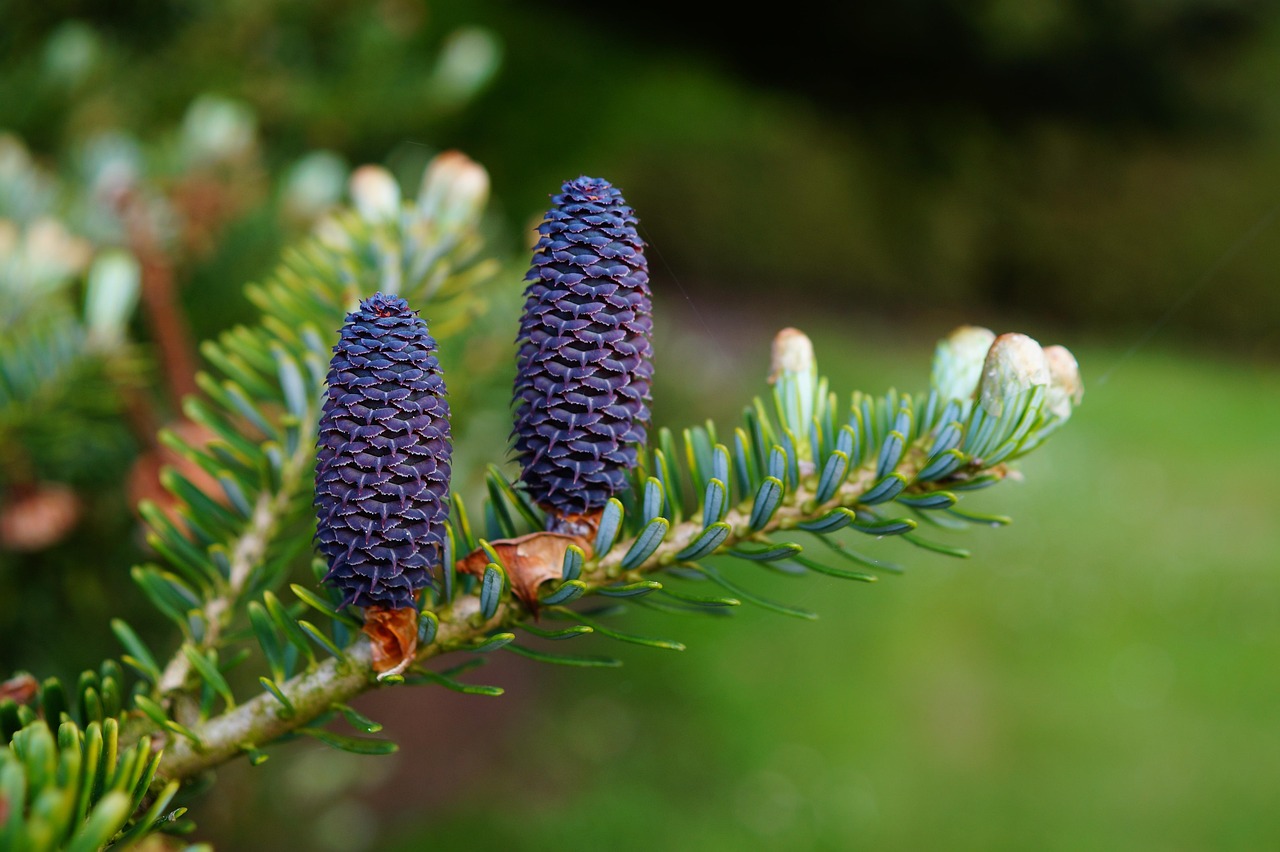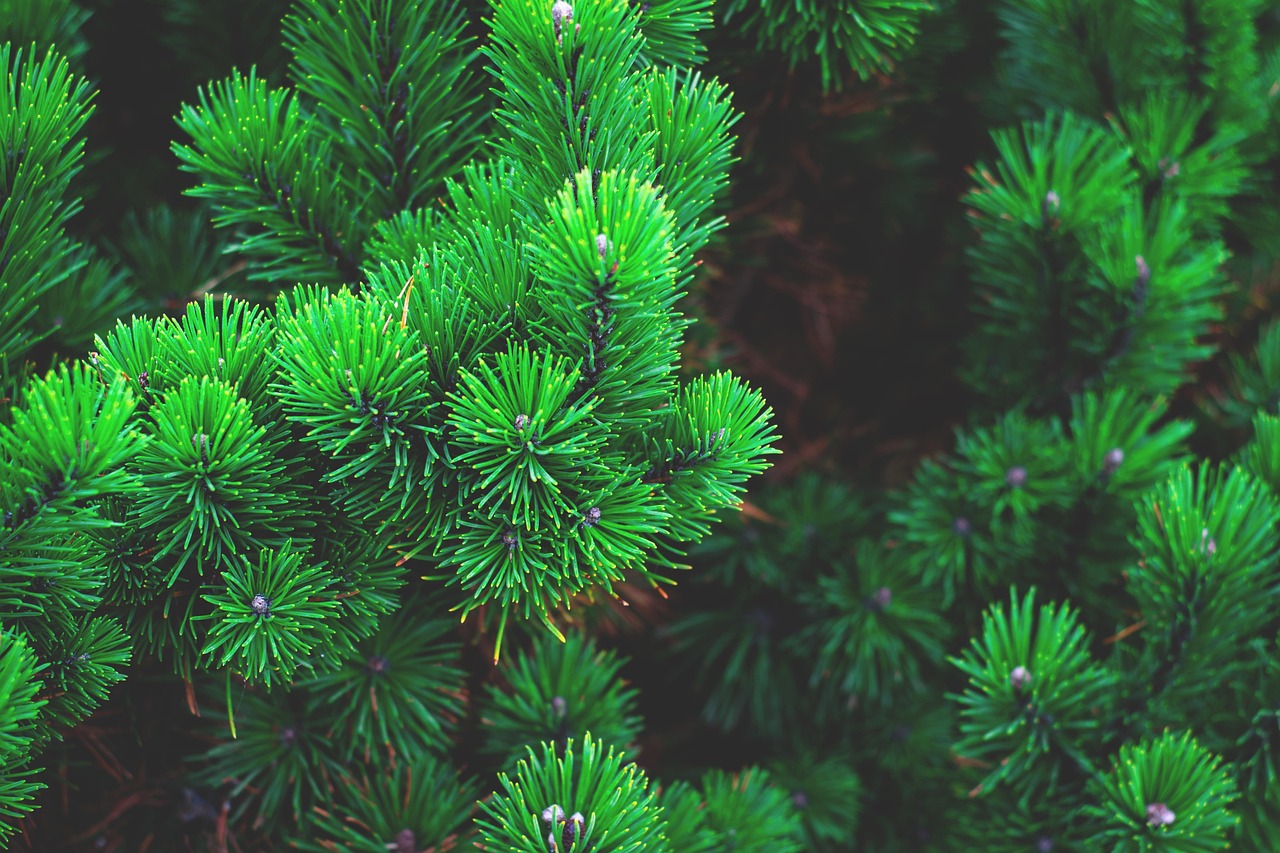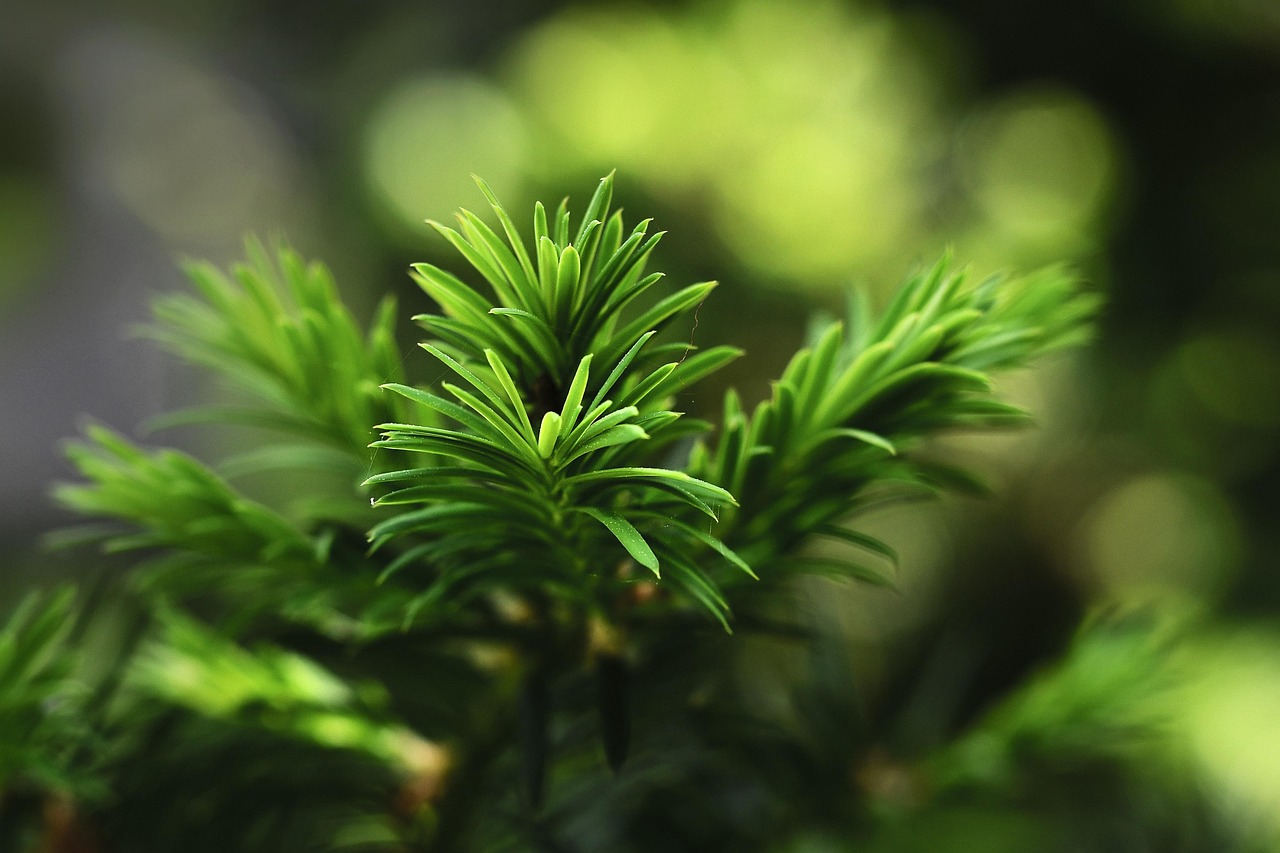Evergreen trees typically experience a moderate growth rate, averaging between 1 to 2 feet per year depending on the species, environmental conditions, and care. This consistent growth allows them to maintain their lush appearance throughout the year.
Evergreen trees are a popular choice for landscaping due to their ability to provide color and structure all year round. Unlike deciduous trees, which lose their leaves in the fall, evergreens retain their foliage, making them an attractive option in various climates. They play an essential role in the ecosystem by providing habitat for wildlife and improving air quality. Understanding the growth rates of these trees is vital for proper planting, maintenance, and landscaping design.

The growth rate of evergreen trees can vary significantly based on several factors. These include the specific species of the tree, soil quality, water availability, and climate conditions. Some fast-growing evergreens can reach heights of 30 feet or more within a few years, while slower-growing varieties may take decades to reach their full potential.
Factors Affecting Evergreen Tree Growth Rate
Several key factors influence how quickly evergreen trees grow. Recognizing these can help gardeners and landscapers make informed decisions when selecting and caring for these trees.
- Species: Different species of evergreen trees have unique growth patterns. For example, Eastern Red Cedar can grow up to 3 feet per year, while Blue Spruce typically grows slower at about 1 foot per year.
- Soil Quality: Healthy, nutrient-rich soil promotes faster growth. Soil pH, texture, and organic matter content are essential considerations.
- Water Availability: Adequate moisture is crucial. Evergreen trees require sufficient water, especially during their early years of growth.
- Climate: Temperature and seasonal weather fluctuations impact growth. Mild winters and warm summers generally favor faster growth rates.
- Sunlight: Most evergreen trees thrive in full sun. Lack of sunlight can stunt growth and weaken the tree’s overall health.
To illustrate the growth rates of different evergreen tree species, consider the following table showcasing common varieties along with their average growth rates:

| Tree Species | Average Growth Rate (Feet per Year) | Maximum Height |
|---|---|---|
| Pine (Eastern White) | 1.5 – 2 | 50 – 80 feet |
| Cypress (Leyland) | 3 – 4 | 50 – 70 feet |
| Spruce (Norway) | 1 – 2 | 40 – 60 feet |
| Cedar (Western Red) | 1 – 2 | 50 – 70 feet |
| Fir (Douglas) | 1 – 3 | 70 – 100 feet |
Maintaining healthy evergreen trees requires understanding their needs throughout the year. Regular watering during dry spells, appropriate fertilization, and pruning are essential practices. Additionally, monitoring for pests and diseases can prevent setbacks in growth.
In summary, choosing the right evergreen tree for a landscape involves considering its growth rate and specific requirements. This ensures not only year-round greenery but also a vibrant and flourishing environment that enhances property aesthetics.
Best Practices for Planting Evergreen Trees
Successfully planting evergreen trees requires careful planning and execution. Proper planting techniques can significantly influence their growth rates and overall health. Here are some best practices to consider when planting these trees.

- Select the Right Location: Choose a site that provides adequate sunlight and has appropriate soil conditions. Many evergreens prefer well-draining soil and full sun exposure for optimal growth.
- Prepare the Soil: Before planting, enrich the soil with organic matter. Testing the soil pH can also help ensure that it is suitable for the specific type of evergreen you are planting.
- Dig the Right-Sized Hole: The planting hole should be about twice as wide as the root ball but no deeper than the root ball itself. This allows for better root expansion and growth.
- Watering: After planting, water the tree thoroughly. This helps settle the soil and eliminates air pockets around the roots.
- Mulching: Apply a layer of mulch around the base of the tree to retain moisture, suppress weeds, and regulate soil temperature.
Common Evergreen Tree Species and Their Characteristics
Diverse evergreen tree species offer various characteristics, making it essential to choose the right one for your landscape. Below are some popular evergreen varieties, along with their unique traits.
| Evergreen Species | Characteristics | Ideal Growing Conditions |
|---|---|---|
| Pine (Scots) | Fast-growing, adaptable to various soils | Full sun, well-drained soil |
| Fir (Noble) | Strong aroma, excellent for landscaping | Cool, moist climates with well-drained soil |
| Cypress (Montezuma) | Tolerates wet conditions, lush foliage | Wet or dry soils, full sun to partial shade |
| Hemlock (Eastern) | Fine needles, prefers shade | Partial to full shade, moist, acidic soil |
| Juniper (Common) | Drought-tolerant, low maintenance | Well-drained soil, full sun |
Seasonal Care for Evergreen Trees
Caring for evergreen trees throughout the seasons ensures they remain healthy and vibrant. Here are some seasonal care tips:
Spring
In spring, as temperatures rise, it is crucial to:

- Conduct a deep watering to encourage root growth.
- Apply a balanced fertilizer to support new growth.
- Check for any winter damage and prune if necessary.
Summer
During the summer months, focus on:
- Regular watering, especially during dry spells.
- Mulching to retain moisture and suppress weeds.
- Monitoring for pests and diseases that may thrive in warm weather.
Fall
In fall, prepare your evergreen trees for winter by:
- Watering them thoroughly before the ground freezes.
- Applying mulch to protect roots from temperature fluctuations.
- Trimming any dead branches to maintain shape and health.
Winter
While evergreens are hardy, winter care is still important. Consider these tips:
- Avoid heavy snow accumulation on branches to prevent breakage.
- Check for signs of pests or diseases that may not be visible in other seasons.
- If necessary, wrap young trees with burlap to provide protection from harsh winds and cold temperatures.
By following these seasonal care guidelines, you can help your evergreen trees thrive throughout the year. Proper attention to their needs will ensure they remain healthy and continue to enhance your landscape with their year-round greenery.
Pests and Diseases Affecting Evergreen Trees
Understanding the potential threats to evergreen trees is crucial for maintaining their health and growth. Various pests and diseases can hinder the growth rate and overall vitality of these trees. Identifying these threats early can help mitigate their impact.
Common Pests
Several pests are known to affect evergreen trees. Below is a list of some of the most common pests along with their effects:
- Spider Mites: These tiny arachnids can cause yellowing needles and webbing on branches. They thrive in dry conditions.
- Scale Insects: These pests attach themselves to tree branches, sucking sap and weakening the tree. Infestations can lead to leaf drop and stunted growth.
- Bagworms: These caterpillars create protective bags from leaves and silk, feeding on foliage. They can defoliate trees if not controlled.
- Adelgids: These pests typically affect spruce trees, causing needle loss and discoloration. Their presence can indicate stress in the tree.
Diseases to Watch For
Evergreen trees can also fall victim to various diseases that affect their health. Here are some common diseases:
- Needle Cast: This fungal disease causes needles to turn brown and drop prematurely. It is prevalent in wet conditions.
- Root Rot: Often caused by overwatering, root rot affects the tree’s ability to absorb nutrients and water, leading to decline.
- Phytophthora Blight: A waterborne disease that affects roots and lower stems, causing wilting and browning of foliage.
- Cankers: These are sunken areas on branches or trunks caused by various fungi. Cankers can girdle branches, leading to dieback.
Preventive Measures to Protect Evergreen Trees
Taking proactive steps can significantly reduce the risk of pest infestations and diseases in evergreen trees. Here are some effective preventive measures:
- Regular Inspections: Frequently check trees for signs of pests or diseases. Early detection is key to effective management.
- Proper Watering Practices: Ensure that trees receive adequate but not excessive water. Proper drainage is essential to prevent root rot.
- Fertilization: Use balanced fertilizers to maintain tree health. Healthy trees are more resistant to pests and diseases.
- Pruning: Remove dead or diseased branches promptly. This helps improve air circulation and overall tree health.
- Mulching: Apply organic mulch around the base of trees. This helps retain moisture and suppresses weeds.
Treatment Options for Infestations and Diseases
If you discover pests or diseases affecting your evergreen trees, timely intervention is critical. Here are some treatment options:
Pest Control Methods
For managing pests effectively, consider the following strategies:
- Insecticidal Soap: This is effective against soft-bodied insects like spider mites and aphids. It suffocates pests on contact.
- Neem Oil: A natural pesticide that disrupts the life cycle of many pests while being safe for beneficial insects when used properly.
- Pesticide Sprays: For severe infestations, use commercial pesticide sprays as directed. Always follow label instructions for safe application.
Disease Management Strategies
Treating diseases often requires a multifaceted approach:
- Fungicides: Apply fungicides for fungal infections like needle cast. Ensure treatments are targeted at the right time of year.
- Cultural Practices: Improve air circulation by spacing trees appropriately and maintaining proper watering practices.
- Soil Amendments: Amend soil with organic matter to improve drainage and promote healthy root systems, reducing susceptibility to root rot.
By being proactive in pest and disease management, you can help your evergreen trees thrive and ensure they continue to provide year-round greenery in your landscape.
Additional Considerations for Evergreen Tree Care
Beyond growth rates, seasonal care, and pest management, there are additional considerations that can enhance the health and longevity of evergreen trees. By incorporating these elements into your tree care practices, you can create a more robust environment for these resilient plants.
Soil Health and Management
Soil health is fundamental to the growth of evergreen trees. Healthy soil promotes strong root systems and provides essential nutrients. Here are some practices to maintain and improve soil health:
- Soil Testing: Conduct regular soil tests to monitor nutrient levels and pH. This information can guide your fertilization and amendment strategies.
- Organic Matter: Incorporate compost or well-rotted manure to improve soil structure, fertility, and moisture retention.
- Cover Crops: Consider planting cover crops during the off-season. These can improve soil structure and prevent erosion while adding nutrients back into the soil.
Mulching Benefits
Mulching is an important practice in evergreen tree care. Here are some benefits of using mulch:
- Moisture Retention: Mulch helps retain soil moisture, reducing the need for frequent watering.
- Weed Suppression: A layer of mulch prevents weed growth, which can compete with evergreens for water and nutrients.
- Temperature Regulation: Mulch insulates the soil, helping to keep roots cool in summer and warm in winter.
Environmental Considerations
When planting and caring for evergreen trees, consider the surrounding environment. Here are some factors to keep in mind:
- Native Species: Whenever possible, choose native evergreen species. They are better adapted to local climate conditions and require less maintenance.
- Wildlife Habitat: Evergreens provide essential habitat for wildlife. Consider planting them in a way that supports local ecosystems.
- Climate Change Adaptation: As climate patterns shift, select species that are resilient to changing conditions. Research future climate impacts on your area to make informed choices.
Final Thoughts
Evergreen trees offer numerous benefits, including year-round greenery, habitat for wildlife, and improved air quality. Understanding their growth rates, care requirements, and potential threats will help you cultivate a thriving landscape. By following best practices for planting, seasonal care, pest management, and soil health, you can ensure that your evergreen trees remain healthy throughout the years.
The selection of appropriate species based on your local climate and conditions is also crucial. Investing time in research and preparation will pay off in the long run, resulting in lush and vibrant evergreens that enhance the beauty of any landscape.
In conclusion, proper care and attention to evergreen trees lead not only to a flourishing garden but also contribute positively to the environment. With the right knowledge and practices, anyone can maintain these magnificent trees, ensuring they provide beauty and benefits for generations to come.
